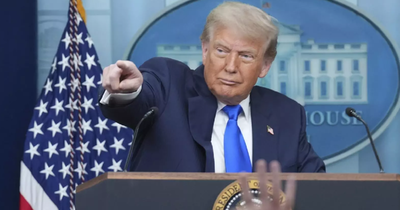
While President Donald Trump’s “Big Beautiful Bill” has drawn noisy debate over taxes and immigration, its most transformative, and potentially divisive, legacy may unfold far from the public gaze: Inside America’s classrooms.
Formally known as the American Prosperity and Freedom Act, the bill runs 940 pages deep. Nestled in its dense legal language is a radical reimagination of how education is funded, who controls it, and what it’s meant to teach.More than a fiscal realignment, the bill signals a cultural and institutional recalibration, a blueprint not just for cutting costs, but for shrinking the federal government’s role in shaping educational equity and intellectual freedom.
Defunding the foundation
At the heart of the legislation lies a nearly 20% cut to discretionary funding for the US Department of Education over five years. This is no administrative trimming. Critical lifelines such as Title I grants, designed to level the playing field for students in low-income districts, and IDEA funds supporting students with disabilities face sharp reductions.In real terms, that means fewer teachers, larger class sizes, shuttered after-school programmes, and thinner support for special education.
For under-resourced schools already walking a fiscal tightrope, this isn’t reform. It’s a retreat. And for districts that rely heavily on federal aid to supplement inadequate state budgets, the message is clear: you’re on your own.
Choice or abandonment?
The bill also elevates a longstanding conservative goal, school choice, by creating a federal tax credit scholarship programme. Under the guise of parental empowerment, the initiative incentivizes donations to private school tuition, effectively subsidizing elite alternatives while siphoning funds from the public system.To supporters, this is freedom in action, a mechanism to spark competition and elevate standards. But critics see something far more corrosive: A public school exodus that accelerates segregation, weakens accountability, and hollows out the very system meant to serve all students. If left unchecked, it could reshape education into a two-tiered model, one privately buoyed and publicly neglected.
The return of debt-driven futures
Perhaps no provision has sparked more alarm among recent graduates than the rollback of Public Service Loan Forgiveness (PSLF) and the rollback of income-driven repayment schemes.
In their place: Increased reliance on private lenders and corporate partnerships to manage student loans.This pivot represents not just a policy shift but a moral disinvestment in those who choose public service, teachers, social workers, and rural doctors. With no promise of debt relief, many will opt out before they even begin. The future will be more indebted, more risk-averse, and less willing to serve.
A curriculum draped in red, white, and blue
Education, under Trump’s bill, isn’t just an economic tool; it’s a cultural battlefield.
Echoing the rhetoric of the 1776 Commission, the bill allocates $500 million toward “American Values Curriculum Grants,” with an explicit directive: teach US history through a lens of national pride and exceptionalism.What does that mean in practice? A potential erasure of systemic critique, reduced engagement with marginalized histories, and teacher training programs aligned with ideological litmus tests.
Supporters hail it as a corrective to “anti-American bias.” Detractors warn it edges dangerously close to state-sponsored historical revisionism, where patriotism comes at the cost of intellectual honesty.
Knowledge under siege
The bill’s impact on higher education is equally profound. While STEM fields tied to defence and industry are protected, social sciences and environmental research face a 12% funding cut. This selective pruning risks reorienting universities around military-industrial priorities, undermining the pursuit of knowledge that challenges, questions, and enriches democratic society.PhD programs in climate change, sociology, or public health, already vulnerable, may contract or vanish entirely. The academy’s capacity to interrogate power, inequality, or the planet’s fragility is quietly being starved.
Federal hands off, private hands in
Across its many chapters, the Big Beautiful Bill weaves a consistent theme: Less federal protection, more market intervention. Public institutions are pushed toward privatized models.
Equity-based funding is exchanged for performance-based incentives. Ideological coherence replaces pedagogical complexity.This isn’t merely conservative tinkering. It’s the architectural undoing of federal involvement in public education, with consequences that will play out over decades, not news cycles.The fight ahead
States reliant on Title I and IDEA funds are lobbying for carve-outs and concessions. But the scaffolding has shifted.What was once a federal promise, that no child’s future would be determined by their ZIP code or income bracket, is now being recast as a local gamble and a parental responsibility.
Education reimagined, but for whom?
Trump’s “Big Beautiful Bill” may never draw the fiery protests of immigration bans or the coverage of Supreme Court appointments.
But it represents something arguably more enduring: A generational redesign of the American education system, not by consensus, but by calculation.
What we’re witnessing is not just defunding or deregulating, but a deliberate redefinition of what education is for, who it belongs to, and whose history it must teach. For all its patriotism, the bill risks betraying the most essential American promise, that education, in a democracy, is not a privilege. It is a right.

 9 hours ago
59
9 hours ago
59




























 English (US)
English (US)